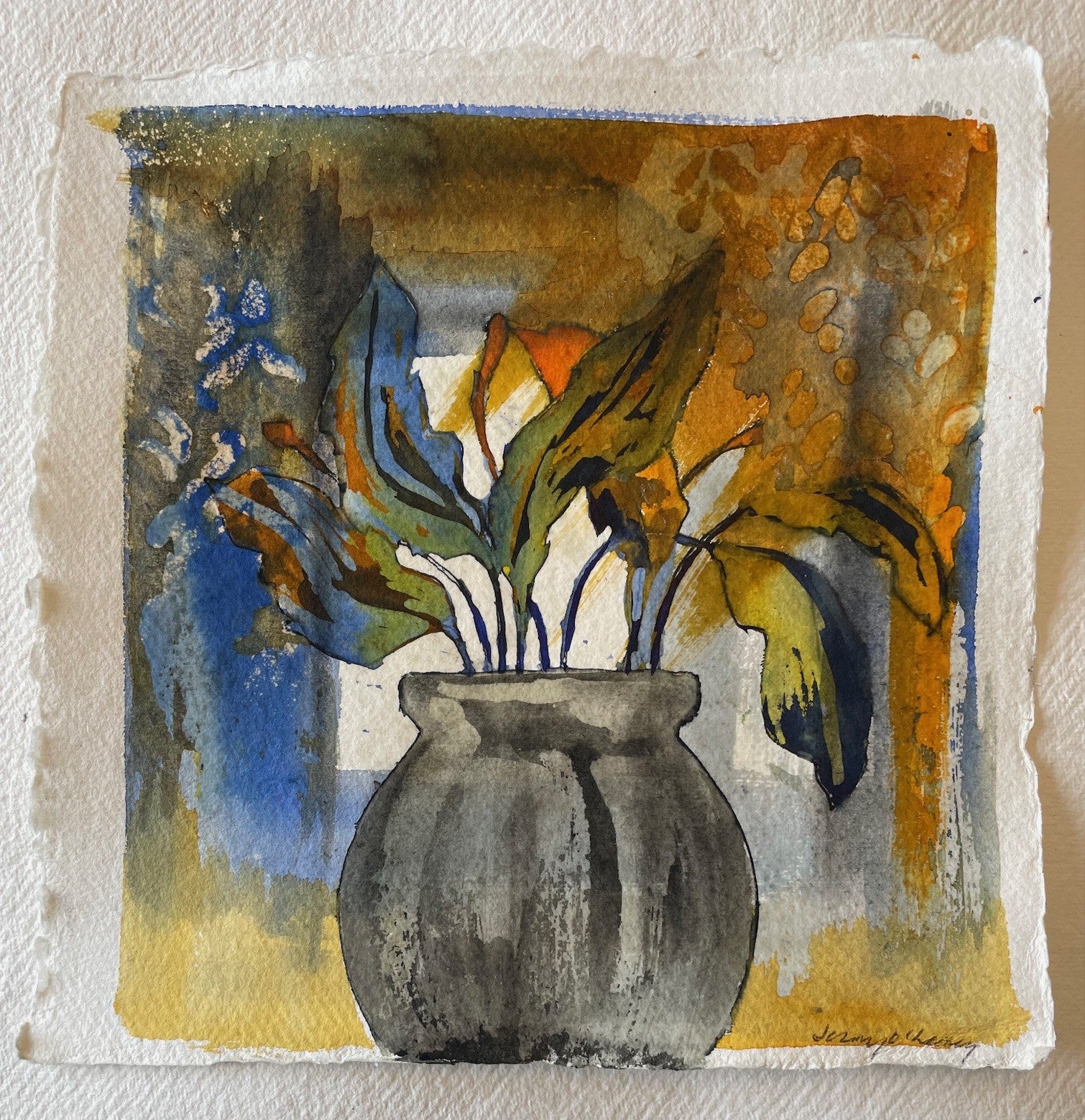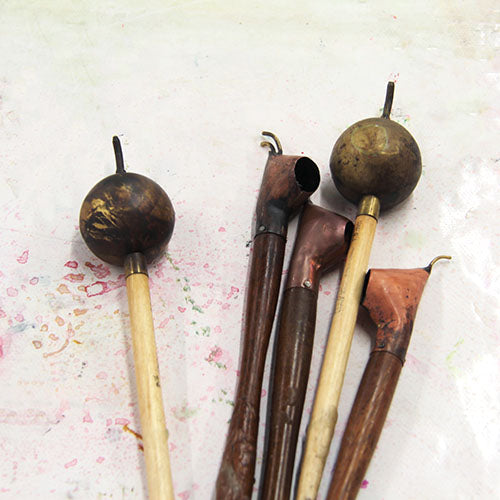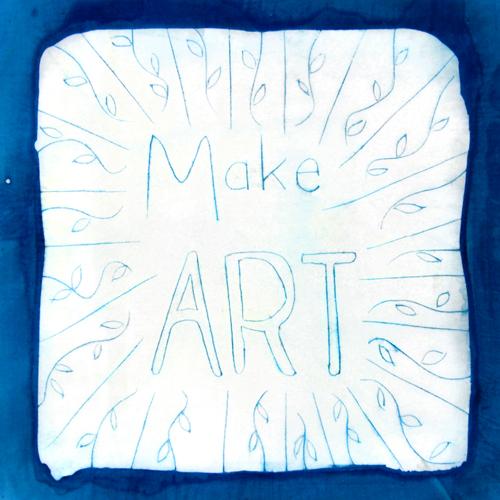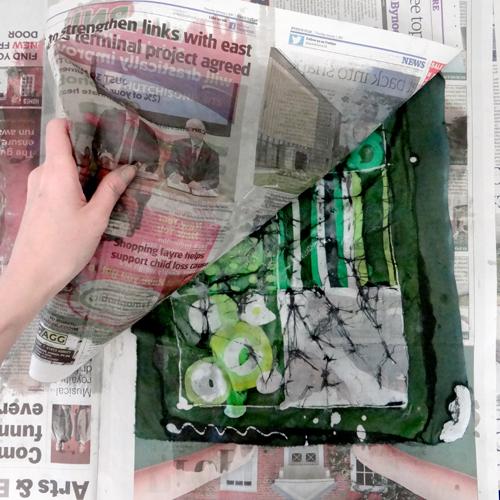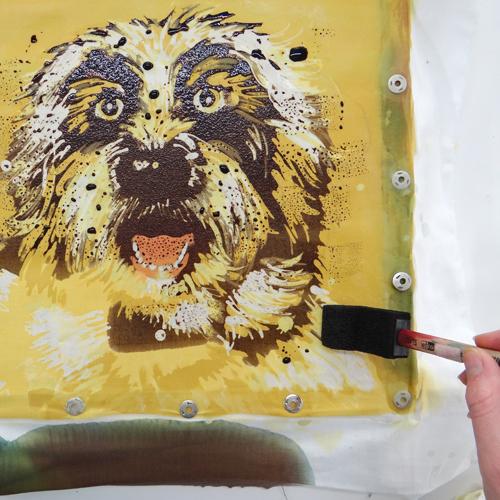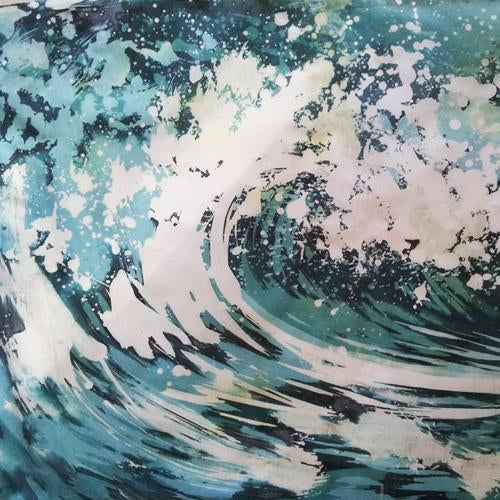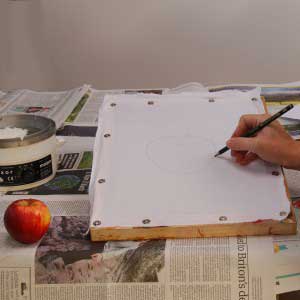Blog - Batik
-
Hi, my name is Jenny O’Leary and I am a textile artist and tutor living in Shropshire. I work with batik (hot wax resist), mainly on tissue paper - combining it with bleach, ink and dyes. I sometimes stitch to create beautiful surfaces and textures. Collage and layering are an important part of my work...
-
Batik is a fun, dynamic way of creating bold and beautiful designs on cloth but did you know batik can be made on paper too? We used some Tej Prakrtika paper (as well as testing some others) to create a colourful,...
-
Tjantings (or cantings) are beautiful Javanese tools for applying wax to cloth when making a batik. They have a long handle and a little copper or brass pot with a spout from which melted wax is let out. Read more
-
Sgraffito is a fast batik technique in which positive marks are scratched into the surface of the wax and filled with ink. Use sgraffito in combination with other batik methods or make a speedy sgraffito batik like in the project below: Begin by pinning out your fabric. Pre-washed, 100% cotton works best – we use … Continue reading "How to Make a Sgraffito Batik"
-
Making a batik is the satisfying process of layering wax and dye to create bold, intricate designs. The more layers of dye and wax that are added, the thicker and stiffer the fabric will become. At the end of this process, you’re left with a hard, milky-looking piece of cloth. Here’s how to iron the … Continue reading "Ironing the Wax out of a Batik"
-
There are several waxes that can be used for making batiks, all of which will produce slightly different results. Standard Batik Wax is a blend of beeswax and paraffin wax but soya wax makes a good alternative. Soya wax is more sustainable, plant based, natural and petroleum free wax. Our soya wax comes from renewable…
-
Batik can be a really fiddly process that may seem a little scary to try at first – but it doesn’t have to be! In this project we have layered wax and dyes to create a wonderfully abstract fabric design that can be used for embroidery, quilting, lampshades, clothing or just a piece of artwork … Continue reading "Creating Layered Fabric Designs using Batik"
-
Back in March last year we made a reduction linocut from a rather handsome picture of our very own Handprinted dog, Fletcher (of ‘Fletcher the Screen Printing Dog’ fame). The reduction lino process lends itself really well to this kind of image because of the tonal build up in the fur. You start by carving …
-
I don’t know about you, but thanks to years of being in school followed by forever being surrounded by children and teachers, Autumn will always signal the beginning of my year and a time to learn something new. This year’s September-knowledge-thirst led me to a weekend-long batik course run by Noel Dyrenforth in Hove. The …
-
A simple guide to batik. Step 1 Pin the fabric tightly to a frame using silk pins or drawing pins. Draw the design on lightly using a pencil. Step 2 Mix up a dye base using 1 litre warm water with 10 tbsp Urea and 1 tsp of Calgon. Mix 1/2 tsp Lemon Yellow Procion …

